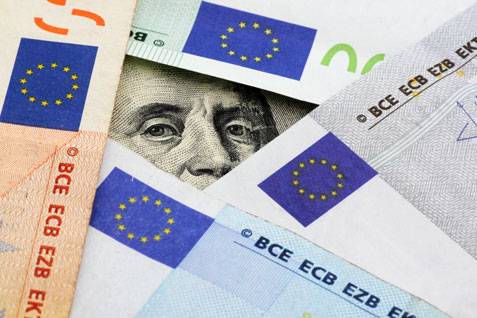Gold prices in the United States and worldwide have risen sharply in recent months, driven by a combination of economic, financial, and political factors.
This trend — in which gold has outperformed the US GDP and the four major American stock indexes — began in 2000 and continues to this day.
Below are 13 reasons explaining why gold has outperformed most major investments and why it is likely to continue attracting both retail and institutional investors:
1. A Safe Haven in Times of Uncertainty
Throughout history, people — from merchants to monarchs — have held gold as a hedge against inflation, economic instability, and war. Owning gold has enabled individuals to survive political crises, especially during the collapse of fiat currencies.
2. Geopolitical Tensions
Global instability has recently become a key driver of gold’s rally. Conflicts in the Middle East, the war in Ukraine, and the decline of Hong Kong’s autonomy under the Sino-British agreement have all contributed to higher gold prices.
3. The US Federal Reserve
For over half a century, gold prices have risen partly as a hedge against inflation and weak US monetary policy. According to the Bureau of Labor Statistics, today’s dollar buys only 16.78% of what it could purchase fifty years ago. If the dollar were still backed by gold, it would have retained its full purchasing power.
4. Inflation and the US Dollar
For much of its history, the US dollar was backed by gold and/or silver. In the early 20th century, 100 one-ounce gold coins could buy a mid-priced home. In 1980, gold averaged about 615 dollars per ounce, while the average US home cost around 64,600 dollars.
According to the Federal Reserve Bank of St. Louis, the average home price today is 422,600 dollars, while gold stood near 4,203 dollars per ounce as of October 15, according to Yahoo Finance.
In 1980, buying a new home required about 100 ounces of gold — roughly the same amount as today — showing that gold has preserved and grown wealth, unlike the dollar, which has lost much of its real value.
5. Central Banks
Many central banks and governments buy gold as a hedge against inflation and to mitigate concerns about the US dollar’s value. For instance, the US national debt has risen from less than 6 trillion dollars in 2000 to nearly 38 trillion dollars today.
6. National Debt and Global Imitation
US national debt now exceeds 37.85 trillion dollars — about 124.86% of GDP, compared with 34.68% in 1980. That equals roughly 110,176 dollars per citizen or 326,500 dollars per taxpayer. Excessive government spending isn’t unique to the US; Japan and China face even higher per-capita deficits.
7. Political Instability in the United States
The US federal budget deficit stands at roughly 1.9 trillion dollars annually, with little chance of reduction given the lack of political cooperation. Reversing this trend would require policies that support both economic growth and fiscal discipline.
8. Global Policy Divisions
Disagreements over trade, taxation, food production, and electric vehicle manufacturing have fueled global tensions, contributing to gold’s upward momentum.
9. Economic Philosophy and Growth
In the US and other nations founded on free-market capitalism and the rule of law, increasing regulation and declining entrepreneurial spirit have stifled growth, pushing investors toward gold as a safer store of value.
10. Stock Market and GDP Performance
From 2000 through the end of September 2025, gold has outperformed the four major US stock indexes, as well as silver and US GDP growth, easily outpacing inflation and reaffirming its resilience as a long-term store of value.
11. The Real Goal of the BRICS Alliance
BRICS nations — Brazil, Russia, India, China, and South Africa — along with other countries less aligned with the US, are buying large quantities of gold in an effort to replace the dollar as the world’s reserve currency. If successful, it would make global transactions costlier for American producers and consumers and weaken US foreign policy influence.
12. Technological Advancement and the AI Boom
Gold’s use in technology grew significantly between 2000 and 2010 before dipping slightly. With the rapid rise of artificial intelligence and new energy systems, demand for gold has climbed again thanks to its superior conductivity and corrosion resistance.
13. Limited Supply vs. Rising Demand
Global gold demand hit record highs in 2024 and 2025, while new supply has failed to keep pace. Unless one or more of these underlying factors change, gold prices are likely to continue rising in the years ahead.
Conclusion
On October 9, gold closed at 3,946 dollars per ounce, down about 100 dollars on the day, as markets rallied following a ceasefire announcement between Gaza and Israel.
But the next day, major markets fell more than 800 points after China announced new restrictions on rare earth exports to the US — sending gold back above 4,000 dollars per ounce.
The report concludes that the only sustainable way to lower gold prices is through sound political and economic policies that promote both economic and political freedom — policies that give people everywhere the opportunity to live in a more open, competitive, and prosperous environment, where success stems from hard work and innovation rather than government intervention.


